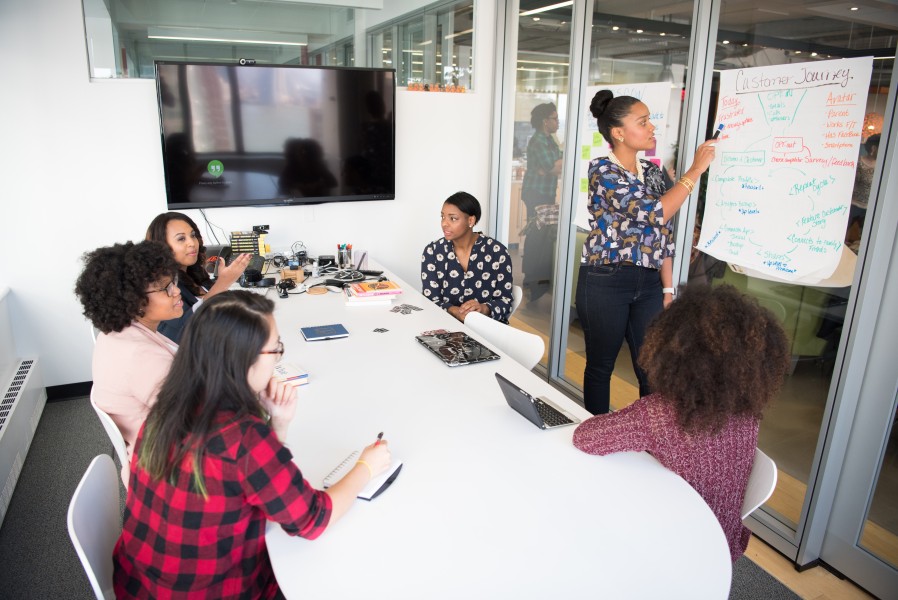
What sets apart branded content from an ad? It’s a question we get from not only prospective advertisers, but from sales teams actively trying to sell branded content right now.
While it’s true that branded content can be part of an ad campaign, if you want your story to get engagement (read: drive awareness), you need to put on your reporter hat and find a unique and compelling story to tell.
[READ: 5 tips that will help you create great sponsored content]
This is where a designated content strategist can come into play.
These are the steps our team is taking as content strategists for our clients. Whether you’re looking to carve out this role in your media company or you’re looking to hire a third party, these tips will help create content that is not only interesting for your audience, but also helpful.
Take part in pitch meetings
Having a content strategist take part in pitch meetings with sales associates can play a big role in helping close the deal. A content strategist’s goal in a pitch meeting is to highlight the interesting aspects of the advertiser’s story that would make for interesting content. But the main goal is to drive the concept home to make the sale. The content strategist should help in that process by providing engaging story ideas or past examples that will make that advertiser’s campaign successful.
Create a content plan
Here’s where any reporter skills your strategist may (and should) have come into play. In this phase a client strategis should listen to the advertiser, discovering what is important to them and then reacting with angles and ideas that will generate interest with the audience and hopefully resonate with the advertiser.
The content strategist should help develop a content plan for the duration of their campaign. That may happen on this first call but more than likely, a follow-up call or some one-on-one time with the advertiser and the client strategist is where this really starts to take shape.
When serving in the content strategist role, we talk to advertisers about their business: its history, why they got into their field of work, what about them makes their business unique, what makes their team special, and so on — just like a reporter would get to know a source for a story. The strategist should then put together that content plan that includes story ideas and potential sources for those stories for the advertiser to approve.
Here are some examples of what we’ve created recently with our clients:
- How one Long Island dad turned his love for travel into a free vacation planning agency
- Meet two St. Louis families who turned their kitchens upside down and couldn’t be happier with the end result
- Renowned DFW developers join growing Mansfield area with new Watson Branch community
How does this work in the real world?
Let’s use the Long Island dad who has launched a travel agency as an example. After a discovery call with one of our content strategist’s, we discovered several unique things about this person’s business but it was clear that the story of the owner was pretty special: he got into the business because as a kid he wanted to travel more and now this is his opportunity to help others do just that. So we suggested starting with a profile (which has performed well) that introduced him to the audience. As we talked with the travel agent, we learned that he was developing a speciality in Disney trips for families, so we agreed our second story would be a tip-oriented piece on how to save when booking your Disney trip. The final story is still being discussed, but is likely to be around how to book your trip if you have a special needs child.
All of these ideas were driven around what we learned during our phone call with him and what we heard was important. And we’re pretty confident all will deliver a great result for the advertiser. The travel agent didn’t come out and say that these should be the stories we would write but after listening we were able to make pitches to him that we thought work and he agreed.
Do the interviewing and writing
Our team also conducts the interviews needed for each story and then writes the copy. As any reporter knows, sometimes a story can take a complete turn during the interview as you learn more about the business or the source. Interviews are typically where the content strategist is going to find ideas for follow-up stories. We then work directly with the advertisers again on any edits to deliver a ready-to-publish story.
Find more helpful tips and how our team can help you run a successful branded content campaign by contacting us at david@davidarkinconsulting.com.
We'd love to help your organization! Fill out the form below to get started.
Recent Posts

Here’s why you should be making LinkedIn a priority

Here are the best tips and metrics for branded content

Web traffic dropping? Use this SEO checklist

Best measles content and revenue ideas

Here’s how to boost your reader engagement in April
Case Studies

How this unique coaching program taught a reporter the digital skills she needs for the future

How branded content sales exploded for this newspaper in New York

How a TV station in South Dakota significantly grew its traffic through Stacker’s news wire

How these changes helped this newspaper’s coverage of a limo trial skyrocket to the top of Google search result pages

